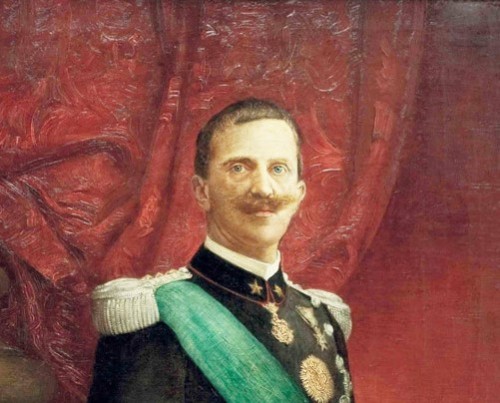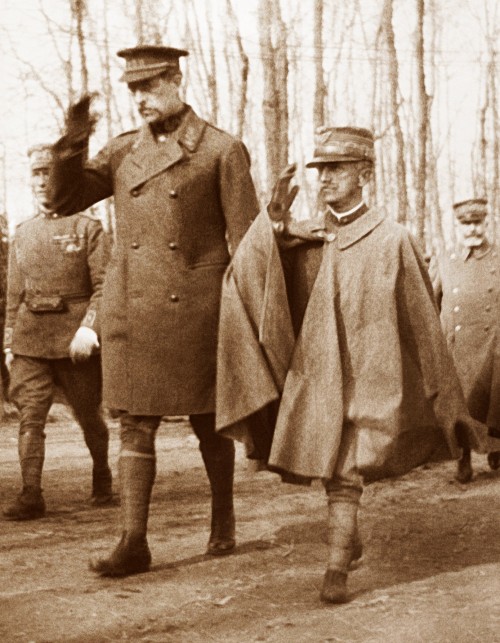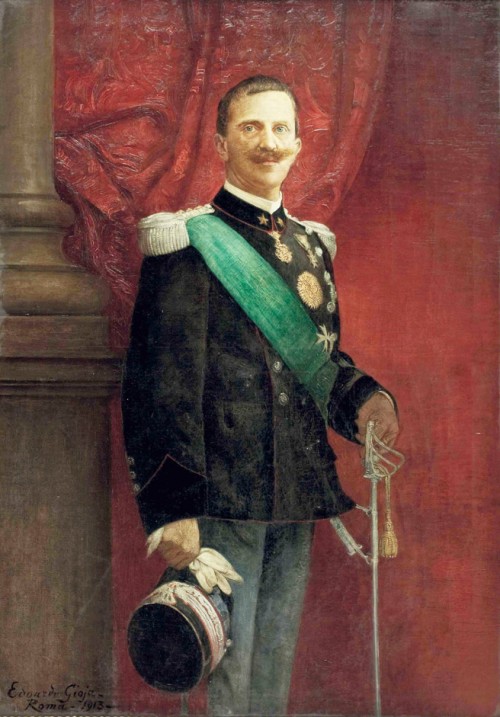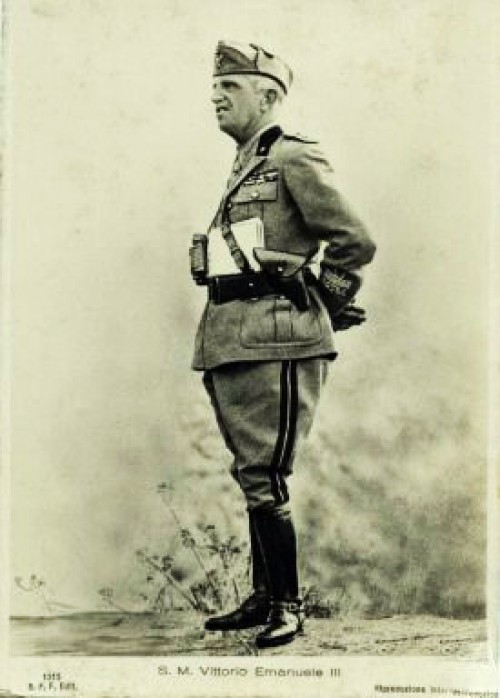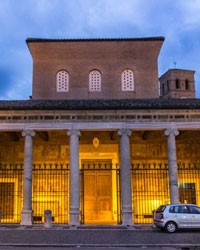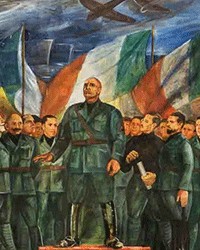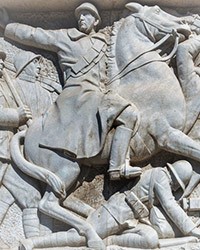At the age of 31 he became the third successive ruler of the United Kingdom of Italy after the tragic death of his father Humberto I in the year 1900, killed by an assassin. Initially he was king of a constitutional monarchy, while the head of the government was Prime Minister Giovanni Giolitti – a skilled pragmatist and a moderate conservative with enlightened views. However, in compliance with the Constitution it was Victor Emmanuel who was chief commander of the armed forces and the person who had the last word when it came to foreign policy. In a situation when Europe shook with the cannon shots of the First World War, he had to answer the call of history as well. Italy, initially neutral for a short time, took the side of the Austro-Hungarian Empire and the German Reich, however already in May 1915 the king changed his mind and forcing the parliament to comply he joined the Triple Entente (France, Great Britain, Russia). However, the Italian armies, under the leadership of the king, were not only lacking in success, but got quagmired in a positional warfare which resulted in thousands of casualties. It was not until aid came from their allies and the slow implosion of the Austro-Hungarian Empire, that Italians managed to pull off a decisive victory at Vittorio Veneto in 1918, which opened the door for the king’s glorious return to Rome in the aura of a victor. It was then, that the 160 cm tall monarch was nicknamed Little Sabre.
Unfortunately the victory in World War I brought Italy nothing more than satisfaction. In a country disappointed by unfulfilled needs for territorial gains and besieged by an economic crisis, nationalis slogans became more and more popular, while the Fascist Party with Benito Mussolini at the helm enjoyed greater and greater support. And it was the Fascists, after the famous March on Rome in October of 1922, who took over power, while the king – fearing civil war – allowed it. He also agreed to Mussolini establishing a dictatorship in 1924, thus becoming a king of a Fascist state. He strengthened it with his authority and the acts he passed, including one on anti-Semitism regarding racial purity (1938). He was a de facto figurehead without any real influence on anything including military issues, tolerated by Mussolini in exchange for his support for Duce’s authoritarian regime. The role of Victor Emmanuel was limited to participation in military parades, celebratory feasts, for instance during Hitler’s visit to Rome. In order to compensate such marginalization, after victories of Italian armies, Duce offered him the title of Emperor of Abyssinia (in 1936) and king of Albania (1939). He was also the one who officially joined the war on the side of the III Reich. And he would have supported Mussolini until the end had it not been for the invasion of Sicily by American forces.
On July 19, 1943, 320 American bombers flew over Rome, dropping 680 tons of bombs on the city. 1492 people died, thousands were injured, while historic buildings were damaged. The allies wanted in this way to break the resistance of the Fascists and “encourage” Italians to capitulate. The king wanting to find out more about losses in the city, was booed and insulted by Romans Perhaps, it was those very insults, apart from bombs, which had ultimately decided about changing of the front. Under the auspices of the king, although not due to his initiative, but the then Fascist government, six days after the bombing, a palace coup d’état took place, to which Mussolini himself fell victim – he was removed from power and arrested. The king as the chief commander of the armed forces also accepted the idea of breaking off the alliance with Hitler. He stood at the head of the army himself and signed an armistice with the allies. However, it was not easy to abandon his previous ally. German forces entered the area of northern and central Italy, while the inhabitants of Rome, found themselves under German occupation starting in September 1943. What did the king do? He left the city and evacuated himself south, to Brindisi, which had already been taken over by the allies, leaving the Romans to fend for themselves. In his breakthrough for European cinema film, Rome, Open City, Roberto Rossellini showed this period of 268 days from the perspective of simple people, fighting, each to their best ability, with the occupant. This was a time marked with hunger, fear, street arrests and revenge executions. For every German killed, ten Italians were shot.
Fortunately allied bombs only slightly damaged the historical tissue of the Eternal City. The early-Christian Basilica of St. Lawrence Outside the Walls (San Lorenzo fuori le mura) was damaged – the final resting place of Pius IX. The following districts also were hit particularly hard: San Lorenzo, part of the Campo Verano Cemetery, Tiburtino district, Nomentana and Prenestino. Ultimately Germans left Rome without a fight, then at the beginning of June 1944, Americans entered, joyfully greeted by its inhabitants. At that time the king also returned to the city. Fully aware of the little regard Italians had for his actions, he decided to abdicate on behalf of his son. However, this did not amount to much. The new king, Humberto II reigned for merely 33 days, since the Italians in a country occupied by Americans, participated in a referendum, based on which in 1946, via a slight majority they rejected the monarchy, instead choosing a republic.
In the very same year the king and his family left Italy for good, going to Egypt. A year later Victor Emanuel III died, while his earthly remains were buried in the Cathedral of St. Catherine in Alexandria. The idea of transporting them back to Italy, had for decades inflamed discussions about the role of the king during World War II. It was not until December 2017, on the seventieth anniversary of his death, that his body was brought back to Italy along with that of his wife Elena of Montenegro. Fearing protests, they were not buried on the Roman Pantheon, where both the father and the grandfather of the monarch were laid to rest, but rather in the Piedmontese Santuario di Vicoforte – the location of the burials of representatives of the House of Savoy.
The residence of the last king of Italy was a palace on Quirinal Hill (Palazzo del Quirinale), while during the summer months he stayed in a summer, suburban residence, the Villa Savoia, located in the northern part of Rome, in a huge park at via Salaria. It was here on July 25, 1943 that after twenty-one years of his rule, Mussolini was arrested. Nearby a shelter has been preserved which served the goal of protecting the royal family.
Today the park (Villa Ada) is partially owned by the city, while the royal residence itself and a part of it (Villa Reale) is occupied by the Embassy of Egypt in Rome.

